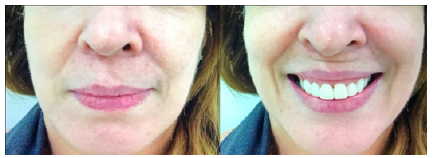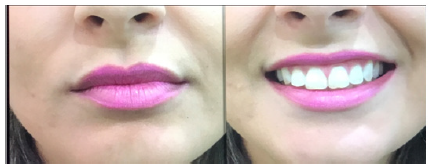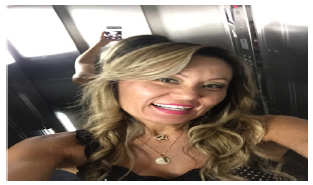Impact Factor : 0.548
- NLM ID: 101723284
- OCoLC: 999826537
- LCCN: 2017202541
Wilson Carlos Mendes*
Received: July 25, 2017; Published: August 02, 2017
Corresponding author: Dr Wilson Mendes, Coordenador do curso de estética orofacial, Brazil
DOI: 10.26717/BJSTR.2017.01.000247
Contrary to what is stated, the gingival smile is not only caused by the upper lip lift muscle and nose wing! We see many treatments performed with Botulinum, on these muscles with disastrous results, leading to upper lip ptosis problems or with the the “joker smile” result. Often we have an interaction of other muscles that act individually or together and knowing how to diagnose the type of action cause by these muscular interactions is fundamental to obtain the satisfactory final result in Orofacial aesthetics! Muscles that may involve the gingival smile may be the lifter of the upper lip and nose wing, upper lip lifter, zigomáticos major, depressor of the tip of the lower lip. All these muscles act individually or together and will interfere with the excursion of the arching off the upper lip. How can we identify which muscle or muscle groups are involved in the case of excessive gingival tissue exposure?

Figure 1:When we have a lifting upper lip muscle action, there will be no formation of the nasal labial groove, and there will be a flat surface to the full extent.

Figure 2:The association of the upper lip and nose lift muscles with the upper lip lifting muscle.
We should analyze the topographic surface of the nasogenoid sulcus as the patient at rest, and without smilling. When there is the action of the upper lip and nose lift muscle, this nasal labial groove will be extensive starting to give lip commissure up to the height of the nasolabial fossa (Figure 1). In the case of the association of the upper lip and nose lift muscles with the upper lip lifting muscle when examining the topography of the nasogenic area, we will have a groove that will start in the nasolabial fossa and as it walks in the Direction of the labial commissure we will have the disappearance of this groove (Figure 2).

Figure 3:The gingival smile the depressor muscle of the tip of the nose.
In some situations we will associate with the gingival smile the depressor muscle of the tip of the nose, which will cause the formation of a groove in the superior region of the orbicular is muscle of the upper lip, and the fall of the tip of the nose (Figure 3). When we analyze the profile of a patient with this type of muscular dynamics we will observe that the upper lip will be retracted.

Figure 4:Excessive exposure of the posterior teeth comes from the action and from the modiolo point.

Figure 5 :The dynamics of the antagonist muscles.
Excessive exposure of the posterior teeth comes from the action and from the modiolo point. This point is the insertion of the larger zygomatic muscle (Figure 4). We must evaluate the dynamics of the antagonist muscles, such as the depressor muscle of the lower lip and the depressor muscle at the angle of the mouth, which can lead to the exposure of the lower teeth after the use of the toxin in the upper lip lift muscles (Figure 5).
This treatment can cause a Ptosis labial yes the muscle blocked by the toxin is not the correct muscle
In order to do this, we will perform the Zica technique in the muscles of the muscles, as a lifter of the upper lip and the wing of the nose and the upper lip lifting muscle. With this, we can simulate the action of the Botulinum on the musculature thus identifying the desired muscle.
I have performed the treatments using Neuronox with the following dosages:
i. We will enter with 1 to 2 U in the upper lip lift muscle and nose wing.
ii. Lip Lifting Muscle 1U or 2 U.
iii. Muscle depressor of nose tip 3 U.
iv. Mouth angle depressor muscle 2 U.
v. Lower lip depressor muscle 1 U.
vi. Modulus point 1 U.


